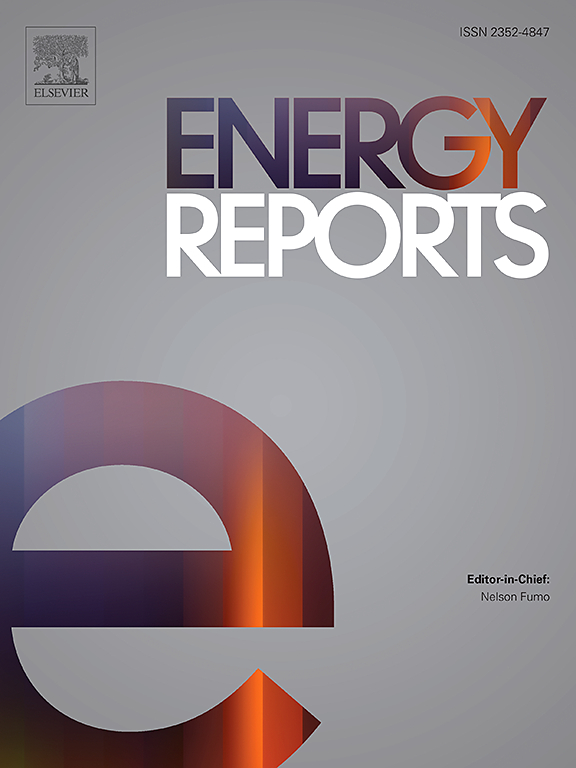Strategic investigation of EOR by surfactant-assisted CO₂-WAG: A pathway toward low-carbon oil production
IF 5.1
3区 工程技术
Q2 ENERGY & FUELS
引用次数: 0
Abstract
The target reservoir contains a high proportion of heavy components in the crude oil, resulting in a high minimum miscibility pressure (MMP) between CO2 and the crude. Additionally, conventional CO2-WAG flooding is prone to gas channeling, leading to premature gas breakthrough at production wells. This study investigates the synergistic potential of surfactant-assisted CO₂ water-alternating-gas (SA-CO₂-WAG) technology to enhance oil recovery while concurrently addressing low-carbon oil production. Through systematic core flooding experiments under actual reservoir conditions (93°C, 22 MPa), the research evaluates the impact of surfactant concentration (0.1–0.5 wt%) and injection rate (0.1–0.4 mL/min) on recovery efficiency. Results demonstrate that SA-CO₂-WAG significantly outperforms conventional CO₂-WAG, achieving an incremental recovery of 24 % compared to 16.2 % for CO₂-WAG, attributed to interfacial tension reduction, wettability alteration, and foam stabilization. Optimal performance was observed at 0.3 wt% surfactant concentration and 0.2 mL/min injection rate, beyond which diminishing returns occurred due to micellization, pore-throat blockage, and adsorption saturation. The study further explores policy frameworks to accelerate SA-CO₂-WAG deployment, emphasizing standardized parameter guidelines, carbon credit incentives, and cross-sectoral infrastructure integration. These findings highlight SA-CO₂-WAG as a dual-purpose solution for low-carbon oil production and carbon sequestration, aligning with global energy transition goals.
表面活性剂辅助CO₂-WAG提高采收率策略研究:低碳采油途径
目标储层原油中含有高比例的重质组分,导致二氧化碳与原油之间的最小混相压力(MMP)很高。此外,常规的CO2-WAG驱油容易产生气窜,导致生产井气侵过早。本研究探讨了表面活性剂辅助CO 2水-气交替(SA-CO 2 -WAG)技术在提高采收率的同时解决低碳石油生产的协同潜力。通过油藏实际条件(93℃,22 MPa)下岩心驱油系统实验,评价了表面活性剂浓度(0.1 ~ 0.5 wt%)和注入速率(0.1 ~ 0.4 mL/min)对采收率的影响。结果表明,SA-CO 2 -WAG明显优于常规CO 2 -WAG,由于界面张力降低、润湿性改变和泡沫稳定,SA-CO 2 -WAG的增量采收率为24% %,而CO 2 -WAG的增量采收率为16.2% %。当表面活性剂浓度为0.3 wt%,注入速度为0.2 mL/min时,效果最佳,超过此值,由于胶束作用、孔喉堵塞和吸附饱和,效果递减。该研究进一步探讨了加速SA-CO₂-WAG部署的政策框架,强调了标准化参数指导、碳信用激励和跨部门基础设施整合。这些发现强调了SA-CO 2 -WAG作为低碳石油生产和碳封存的双重解决方案,与全球能源转型目标保持一致。
本文章由计算机程序翻译,如有差异,请以英文原文为准。
求助全文
约1分钟内获得全文
求助全文
来源期刊

Energy Reports
Energy-General Energy
CiteScore
8.20
自引率
13.50%
发文量
2608
审稿时长
38 days
期刊介绍:
Energy Reports is a new online multidisciplinary open access journal which focuses on publishing new research in the area of Energy with a rapid review and publication time. Energy Reports will be open to direct submissions and also to submissions from other Elsevier Energy journals, whose Editors have determined that Energy Reports would be a better fit.
 求助内容:
求助内容: 应助结果提醒方式:
应助结果提醒方式:


